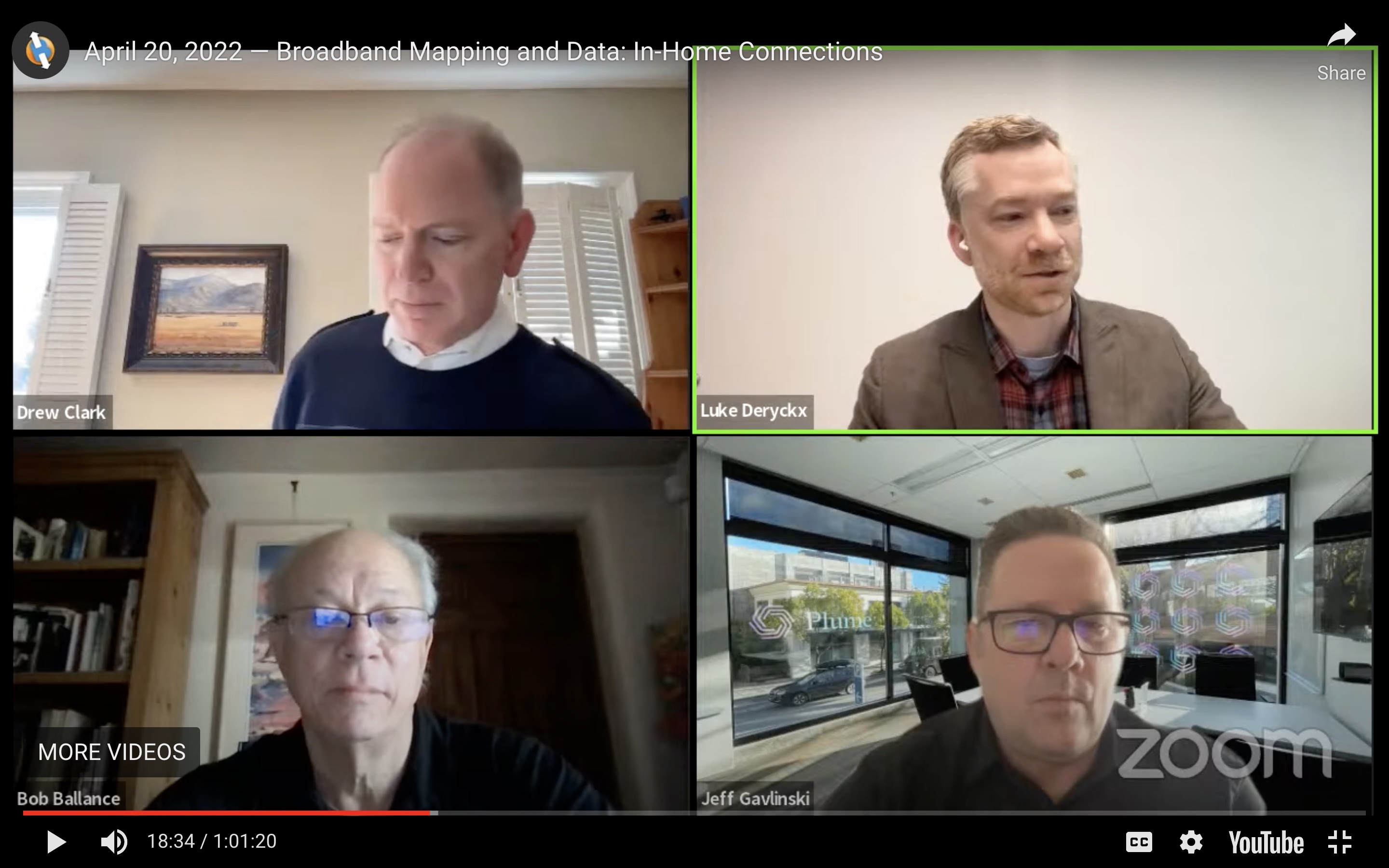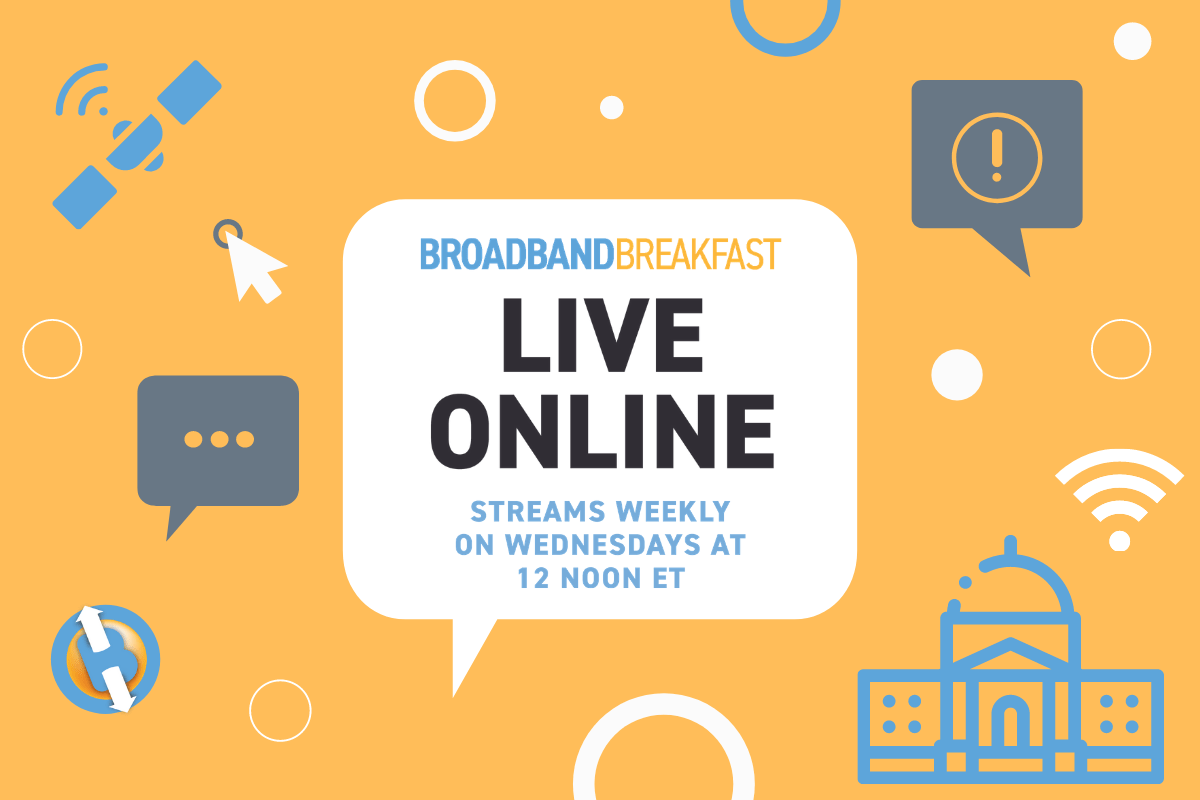Consumers Should Be Better Informed on Factors Throttling Download Speeds
Consumers should know what they are purchasing and what they are getting with internet speeds.

WASHINGTON, April 27, 2022 – As the Federal Communications Commission embarks on crafting labels that clearly outline internet speeds consumers purchase, experts at a Broadband Breakfast event said last week that consumers should get to know the difference between advertised and actual download speeds.
“I think speed tests are part of the problem in this area because we have set the bar really, really high,” said Luke Deryckx, chief technology officer at data analytics company Ookla, a sponsor of Broadband Breakfast. “When you get a gigabit connection, if you take a speed test and you don’t see 900+ gigabits you think ‘what’s wrong?’ That’s not the right answer. The right answer is to look at all the things you can do with that connection.”
The internet speeds that consumers purchase won’t always be what they get. Those theoretical speeds – say that gigabit connection – may be throttled by a number of variables, including the number of devices sharing the network and whether the devices are using either a wireless connection (Wi-Fi) – which may experience signal loss as it must penetrate walls – or a hard-wired connection, which provides speeds closest to what the consumer purchased.
Consumers who have trouble with their internet connection, therefore, are potentially looking at an in-home network problem, according to panelists at the event.
“I think the distinction is important here because router-based speed tests are misleading at best and don’t reflect the consumer experience using devices connected wirelessly,” said Jeff Gavlinski, global vice president of telecom and wireless associations at Plume, a software company.
“We should really think about this from the perspective that there are two distinctly different networks serving a premise,” Gavlinski said. “One to the outside of the premise or router and then one wireless network inside the premise. Perception of the overall quality for both networks, however, is based on the in-premise wireless network.”
The conversation surrounding the problems of in-premise wireless connections comes at a time when the Federal Communications Commission is implementing “broadband nutrition labels” that list information on the pricing and speeds of internet service that internet service providers provide. People within the industry have argued that these labels must be kept simple for consumers, as many don’t understand the intricacies of Wi-Fi connections.
“I’m not sure a lot of consumers today actually want to take the time to understand this [Wi-Fi],” Gavlinski said. “We all do because we’re in the industry. Furthermore, the generation that’s coming up now only cares about whether they do or don’t have a good connection,” said Gavlinski.
At an event earlier this year, Vint Cerf, an early developer of the internet architecture, said episodic measurements of speed using speed tests often yield “skewed data” because people only really run it when they get poor performance. He posited whether there can be a way to “distinguish between poor performance as a consequence of badly configured Wi-Fi versus a poorly performing internet access point or internet access to the ISP.”

This photo was taken at the event.
At a separate FCC consumer advisory meeting on Tuesday, FCC Commissioner Brendan Carr said, “I believe that transparency is the best disinfectant. And so, we need to make sure that consumers have the information they need to be making informed choices.”
Carr added, however, that the labels made by the FCC need to balance how much information is provided to consumers. “I think within that statutory structure, [we should] focus as much as possible on information that is going to benefit people – not be irrelevant, not be distracting – to find ways that people can quickly and efficiently get the information they need to make that beneficial, informed choice.”
Our Broadband Breakfast Live Online events take place on Wednesday at 12 Noon ET. You can also PARTICIPATE in the current Broadband Breakfast Live Online event and REGISTER HERE.

Wednesday, April 20, 2022, 12 Noon ET — Broadband Mapping and Data: In-Home Connections
Even with massive improvements to broadband infrastructure, many customers continue to face trouble transmitting internet signals within their homes. How much of consumers’ complaints about low bandwidth performance can be attributed to poor Wi-Fi transmission or slow computing speeds within the home? And equally important, how will actual speeds factor into the Federal Communications Commission’s and the National Telecommunications and Information Administration’s updated broadband maps and data? Join us for a continuation of the Broadband Breakfast’s ongoing series about Broadband Mapping and Data.
Panelists:
- Jeff Gavlinski, Global Vice President of Telecom & Wireless Associations, Plume
- Luke Deryckx, Chief Technology Officer, Ookla
- Robert Ballance, Founder, The Center for Internet as Infrastructure, LLC
- Drew Clark (moderator), Editor and Publisher, Broadband Breakfast
Panelist resources:
- Broadband Breakfast on April 20, 2022 — Broadband Mapping and Data: In-Home Connections
- Broadband Breakfast on February 2, 2022 — Groundhog Day Special on Broadband Mapping
- Broadband Breakfast on December 22, 2021 — When Will the Broadband Maps Get Fixed?

Jeffrey Gavlinski is currently Global Vice President of Telecom & Wireless Associations at Plume Design. He is responsible for the strategic alignment of Plume’s industry Association partnerships globally. He is also the owner and CEO of Mountain Connect LLC, a company facilitating a broadband development conference that services the U.S. and is hosted in Colorado since 2011.
Luke Deryckx has focused his career on creating, improving, and measuring broadband connectivity of all kinds. He has over two decades of telecommunications and technology industry experience, including time spent with major national service providers, local and regional ISPs, and broadband measurement and analytics technology. In addition to Luke’s work as the Chief Technology Officer for Ookla, he serves on the FCC’s precision agriculture task force in a working group focused on measuring and mapping connectivity in rural and agricultural lands.
Throughout his career, Bob Ballance has helped people and organizations to integrate, optimize, and deploy rapidly-evolving computing systems and new technologies. Bob served as a White House Presidential Innovation Fellow (1/2016-4/2017) when he worked with the BroadbandUSA program at the National Telecommunications and Information Administration (NTIA). Prior to his assignment in Washington DC, he was a Distinguished Member of the Technical Staff at Sandia National Laboratories.
Drew Clark is the Editor and Publisher of BroadbandBreakfast.com and a nationally-respected telecommunications attorney. Drew brings experts and practitioners together to advance the benefits provided by broadband. Under the American Recovery and Reinvestment Act of 2009, he served as head of a State Broadband Initiative, the Partnership for a Connected Illinois. He is also the President of the Rural Telecommunications Congress.

Photo of a router from Ctrl blog
WATCH HERE, or on YouTube, Twitter and Facebook.

As with all Broadband Breakfast Live Online events, the FREE webcasts will take place at 12 Noon ET on Wednesday.
SUBSCRIBE to the Broadband Breakfast YouTube channel. That way, you will be notified when events go live. Watch on YouTube, Twitter and Facebook.
See a complete list of upcoming and past Broadband Breakfast Live Online events.







